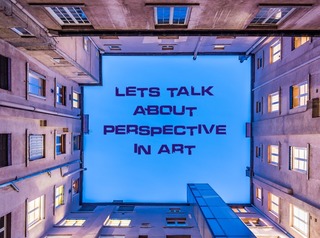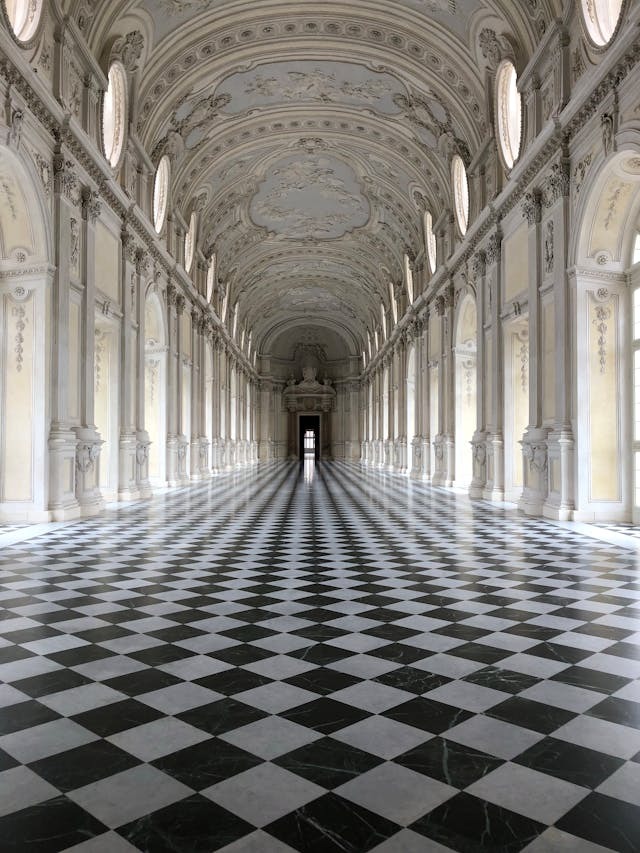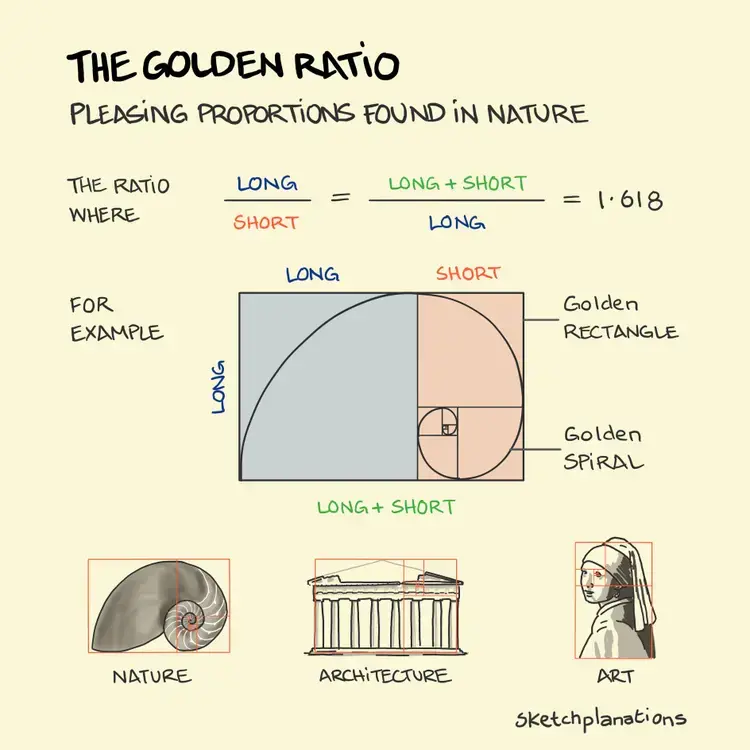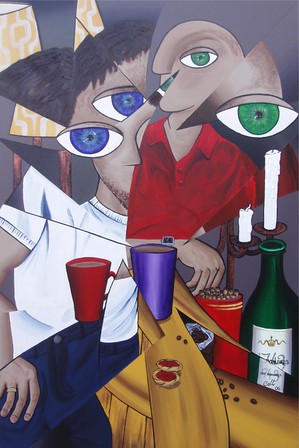Lets talk about Perspective in Art
As an artist, getting perspective right is crucial. Because if it's off, even slightly, the viewer may subconsciously sense something is wrong, even though they can't pinpoint why. A well-executed perspective can make the difference between an artwork that resonates and one that feels a tad unsettling or even unnatural.
What are the Basics of Perspective?
Linear Perspective
Linear perspective is actually more of a mathematical system thats used to project the three-dimensional world onto a two-dimensional surface such as a canvas or piece of paper. It all starts with a horizon line, which represents the farthest distance in the background, and a vanishing point. From there, diagonal lines called orthogonals are drawn towards the vanishing point, defining how objects shrink as they recede into the distance.
Once these foundational elements are set, additional details such as tiled floors or architectural elements can be created using a second point on the horizon called the distance point. This allows for accurate spatial regression, which in turn makes sure that everything appears three-dimensional and realistic.
Interestingly, some Renaissance artists prioritised more symbolic type meanings over perfect perspective. For example, paintings featuring the Virgin Mary sometimes placed the vanishing point at her womb, reinforcing religious significance rather than strict spatial accuracy. Even today, artists will manipulate the perspective in their art to create emphasis on something other than the obvious or direct the viewer's eye in more unconventional ways.
Distorted and Alternative Perspectives
Anamorphous Forms
Anamorphic perspective or optical illusion art, stretches an image so that it appears distorted unless viewed from a specific angle. This technique is commonly used in street art and optical illusions, creating dramatic visual effects that challenge how we perceive space.
Here is a list of a few anamorphous artists:
- Mexican street artist Adry del Rocio
- Sculpture artist Jonty Hurwitz
- French artist Georges Rousse
Curvilinear Perspective
Unlike traditional linear perspective, curvilinear perspective (Think fisheye lens) accounts for the way our eyes naturally see curved lines rather than rigidly straight ones. While this technique has been explored in art, especially during the 19th century, it remains much less common due to the challenge of actually balancing realism with viewer expectations.

Perspective and Nature
Perspective and Nature: linear perspective doesn't always apply to organic forms, such as landscapes or faces, where softer transitions of light and shape create depth in a different way. Artists often use atmospheric perspective, adjusting the colour, contrast, and detail, to suggest distance, which in turn creates a unique and inspiring view of the world.
Perspective in Modern and Digital Art
Over time, artists have both refined and rejected linear perspective. The American realist Thomas Eakins was known for his precise use of perspective, painting outdoor scenes with scientifically accurate shadows that allow art historians to determine the exact time of day they were created. Fascinating stuff right!
On the other hand, Picasso my favourite artist, famously defied traditional perspective with Cubism, breaking objects into multiple viewpoints within the same composition. His work was revolutionary, showing that perspective isn't just about realism but also about artistic expression.
In today's digital world, perspective is meticulously calculated in computer-generated imagery and video games, hense the sense of perfection. Every object and character adheres to precise mathematical rules, ensuring a convincing illusion of depth and space. This adaptability of perspective in the digital realm is both intriguing and a testament to its enduring relevance.
The Rule of Thirds and the Golden Ratio
Perspective isn't just about depth, it's also about composition. Two fundamental compositional tools that artists use are the Rule of Thirds and the Golden Ratio. Understanding and applying these principles can empower artists to create balanced and dynamic compositions.
The Rule of Thirds
Imagine dividing your canvas into a grid of nine equal sections. Placing key elements along these lines or at their intersections creates a balanced and dynamic composition. This technique is widely used in photography and painting, helping to naturally guide the viewer's eye through the artwork.
The Golden Ratio
The Golden Ratio (approximately 1:1.618) appears throughout nature and classical art. It serves as a natural guide for placing elements in a way that feels harmonious and aesthetically pleasing. Artists like Botticelli and Michelangelo used the Golden Ratio in their compositions, creating visually stunning works that feel perfectly balanced.
One fascinating example is the way Leonardo da Vinci applied the Golden Ratio in his masterpiece The Last Supper. The proportions of the table, the spacing of the figures, and even the overall layout align with this ratio, contributing to the painting's timeless appeal.
Image by Sketchplanations
Picasso and Composition
While Picasso is best known for breaking the rules, he still understood and leveraged principles like the Golden Ratio and the Rule of Thirds. His paintings often play with balance and proportion in unexpected ways.
In Guernica, for example, key elements align with compositional guides, even as the distorted figures and chaotic scene reject traditional perspective. This demonstrates that even when artists appear to defy rules, they often rely on underlying structures to maintain visual harmony.
A Lesson in Getting Perspective Wrong
Every artist, at some point, struggles with perspective. I remember early in my painting career, I created a cityscape that just felt... off. The buildings looked slightly skewed, the roads didn't converge properly, and despite my best efforts, the depth wasn't convincing.
It wasn't until I took a step back that I realised my vanishing points weren't consistent. A few adjustments made all the difference, transforming the painting from awkward to immersive. This experience taught me that perspective isn't just technical, it's intuitive. If something feels wrong, it probably is!
In saying that I myself tend to follow in Picasso's footsteps and deliberately distort and break the rules in my my moderm compositions.
Final Thoughts
Mastering perspective, whether through traditional linear methods or more abstract approaches, is essential for creating compelling art. Whether you're carefully plotting vanishing points or using the Golden Ratio to achieve balance, understanding these principles allows you to bend, or break, them with purpose. After all, the best artists don't just follow the rules; they make them their own.
Posted: Sunday 31 January 2010




